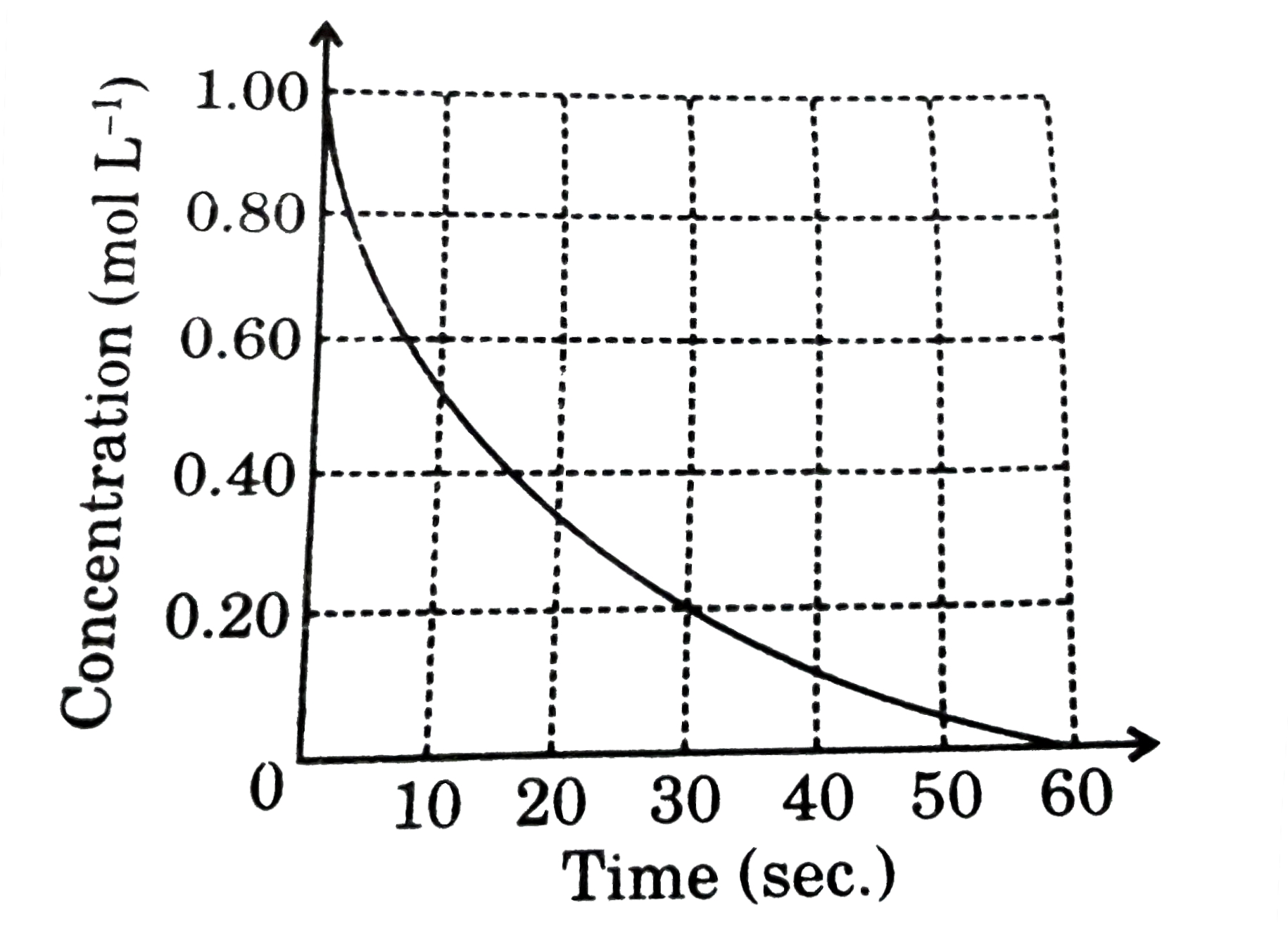Assertion. In any reaction, the rate of disappearance of a reactant is same as the rate of reaction.
Reason. Both rate of reaction and rate of disappearance of a reactant represent decrease in the concentration of a reactant per unit time.
A
If both assertion and reason are true and reason is the true explanation of the assertion.
B
If both assertion and reason ae true but reason is not the true explanation of the assertion.
C
If assertion is true, but reason is false.
D
If both assertion and reason are false.
Video Solution
Text Solution
The correct Answer is:D
Correct A. Rate of reaction may or may not be equal to rate of disappearance of a reactant. It depends upon the stoichiometric coefficient of the reactant in the balanced chemical equation.
Correct R. Rate of disappearance represents decrease in concentration of a reactant per unit time but rate may or may not.
|
Topper's Solved these Questions
- CHEMICAL KINETICSBOOK - PRADEEPCHAPTER - CHEMICAL KINETICSEXERCISE - COMPETITION FOCUS (JEE(Main and Advanced)/Medical Entrance) (VIII. Multiple Choice Questions)
3 Videos
- CHEMICAL KINETICSBOOK - PRADEEPCHAPTER - CHEMICAL KINETICSEXERCISE - IMPORTANT QUESTIONS FOR BOARD EXAMINATION
30 Videos
- CHEMICAL KINETICSBOOK - PRADEEPCHAPTER - CHEMICAL KINETICSEXERCISE - COMPETITION FOCUS (JEE(Main and Advanced)/Medical Entrance) (VII. Assertion-Reason Type Questions) Type - I
6 Videos
- BIOMOLECULES BOOK - PRADEEPCHAPTER - BIOMOLECULES EXERCISE - IMPORTANT QUESTIONS (FOR BOARD EXAMINATION)
25 Videos
- CHEMISTRY IN EVERYDAY LIFE BOOK - PRADEEPCHAPTER - CHEMISTRY IN EVERYDAY LIFE EXERCISE - IMPORTANT QUESTION FOR BOARD EXAMINATION
30 Videos
Similar Questions
Knowledge Check
In a reaction A→B the rate of reaction increases two times on increasing the concentration of the reactant four times, then order of reaction is
A0B2C12D4According to the graph what is the rate of disappearance of the reactant at 10 seconds ?
 A0.025mol⋅L−1⋅sec−1B0.050mol⋅L−1.sec−1C0.40mol⋅L−1⋅sec−1D0.80mol⋅L−1⋅sec−1
A0.025mol⋅L−1⋅sec−1B0.050mol⋅L−1.sec−1C0.40mol⋅L−1⋅sec−1D0.80mol⋅L−1⋅sec−1Assertion : Order of a reaction with respect to any reactant can be zero, positive negative of fractional.
Reason : Rate of a reaction cannot decrease with increase in concentration of a reactant or a product.AIf both assertion and reason are true and reason is the correct explanation of assertion.BIf both assertion and reason are true but reason is not the correct explanation of assertion.CIf assertion is true but reason is false.DIf both assertion and reason are false.
Rate of a chemical reaction is proportional to the concentration of reactants.
View SolutionRate of a chemical reaction is proportional to the concentration of reactants.
View SolutionThe rate constant of a specific reaction is independent of the concentration of the reactants.
View SolutionA reaction is said to be of…………. if its rate is entirely independent of the concentration of the reactants.
View SolutionBigger the size of the reactant particles, higher is the rate of reaction
View Solution
